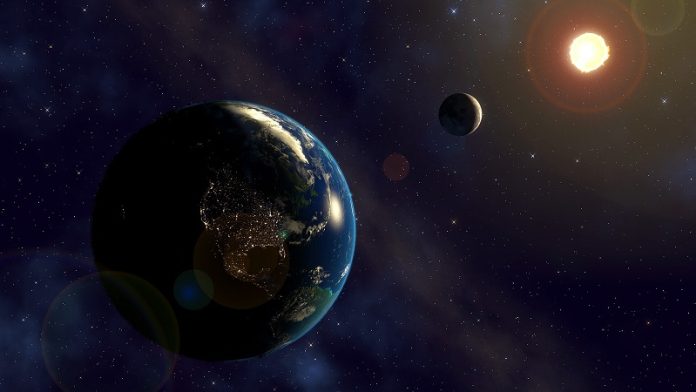
Scientists from the University of Toronto have found out something amazing about our Earth’s history – the length of our days hasn’t always been 24 hours, and we owe this familiar schedule to a cosmic game of tug-of-war between the sun and the moon!
About 4.5 billion years ago when the moon was formed, an Earth day was less than 10 hours long.
Can you imagine that? All the school, homework, sleep, meals, and playtime squeezed into less than half the time we’re used to?
But the moon started changing things. It has been pulling on Earth’s oceans, making high and low tides, and this also slowly puts brakes on Earth’s spinning, making our days longer.
Right now, it’s making our day longer by about 1.7 milliseconds every 100 years.
But something interesting happened around two billion years ago. Scientists found that for over a billion years, our day stopped getting longer and stuck at 19.5 hours.
So, what caused this? The answer is: the sun!
Just like the moon, sunlight creates bulges in our atmosphere – kind of like the high and low tides in the oceans, but in the air.
The sun’s gravity pulls on these bulges, and instead of slowing Earth down like the moon, it speeds it up.
Now, usually, the moon’s pull is about ten times stronger than the sun’s. But there was a time when the atmosphere was warmer, and its natural rhythm matched the length of the day. Think of it like pushing a swing.
If you push the swing at just the right moment, it goes higher and higher. This is what happened with the sun and our atmosphere – they were in perfect sync!
But why does this matter to us now?
Well, it’s all about climate change. As we continue to warm our planet, we’re changing the rhythm of our atmosphere. This means the moon’s pull might start winning the tug of war again, making our days longer sooner than expected.
And here’s an interesting thing – the scientists used the same computer models that predict climate change to study this. So when people doubt those models, this research is proof that they actually work!
Isn’t it fascinating to think about the immense celestial forces that shaped our world into what it is today?
Even the length of our day, something we often take for granted, has an epic story of cosmic tug-of-war behind it!
The study titled “Why the day is 24 hours long; the history of Earth’s atmospheric thermal tide, composition, and mean temperature,” was published in the journal Science Advances.
Follow us on Twitter for more articles about this topic.



